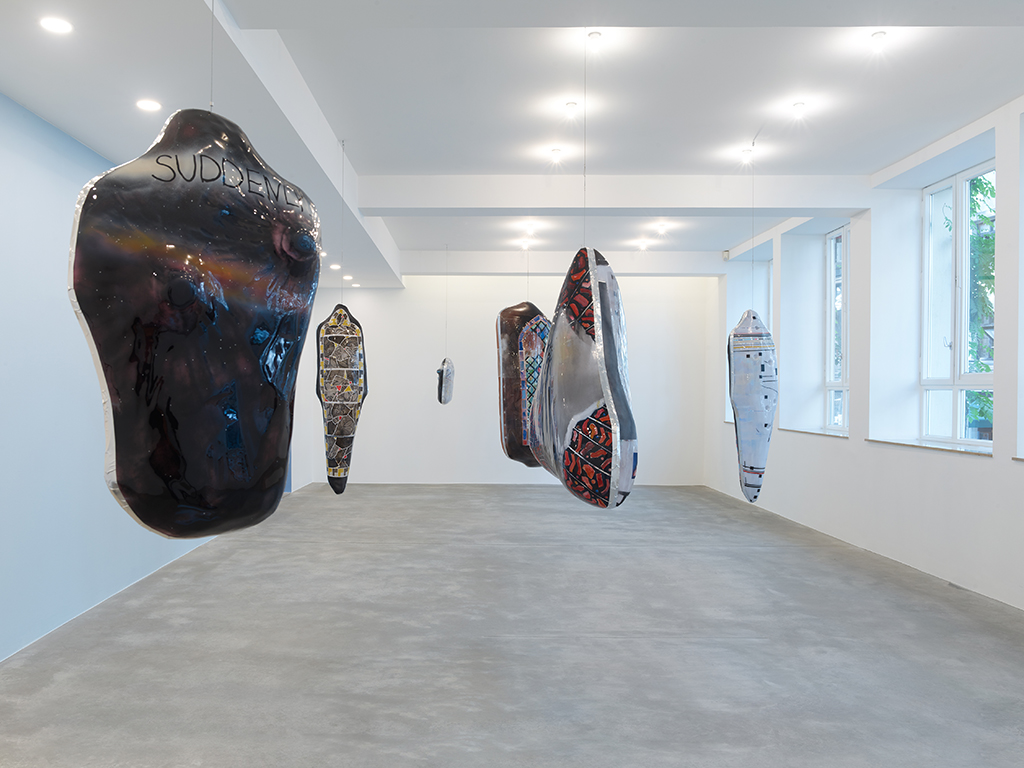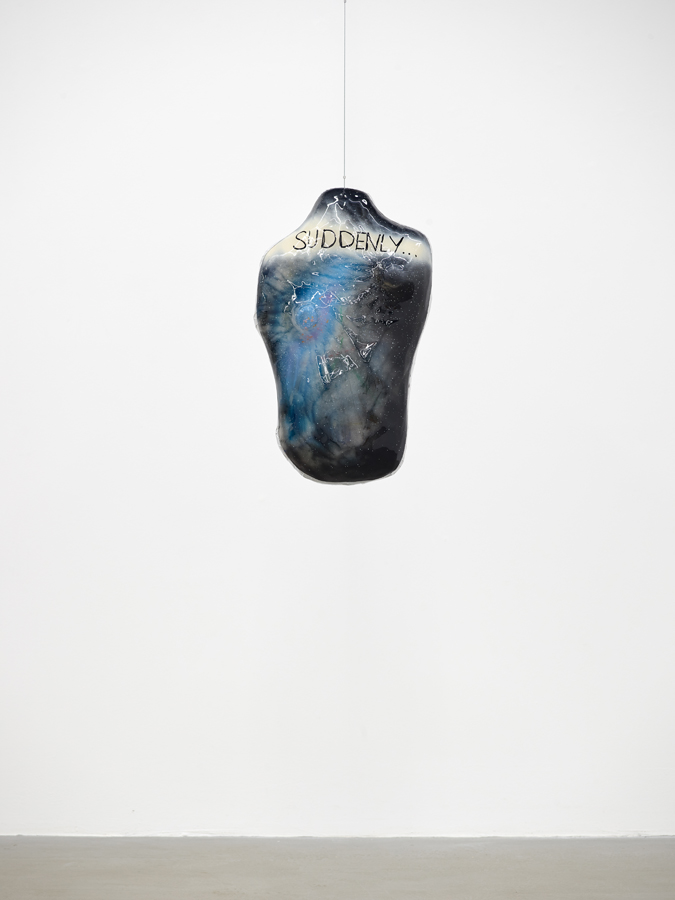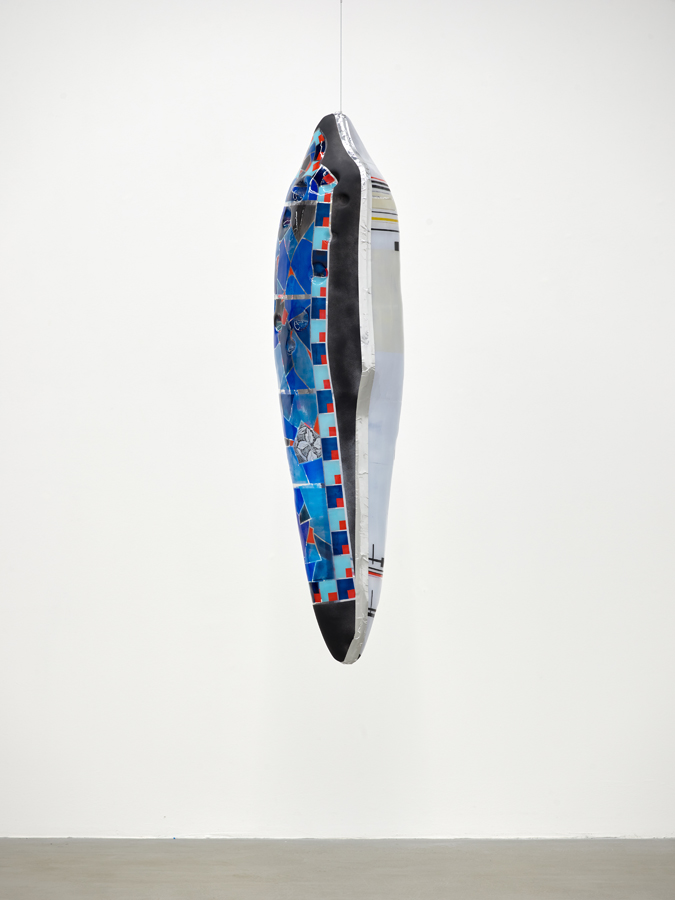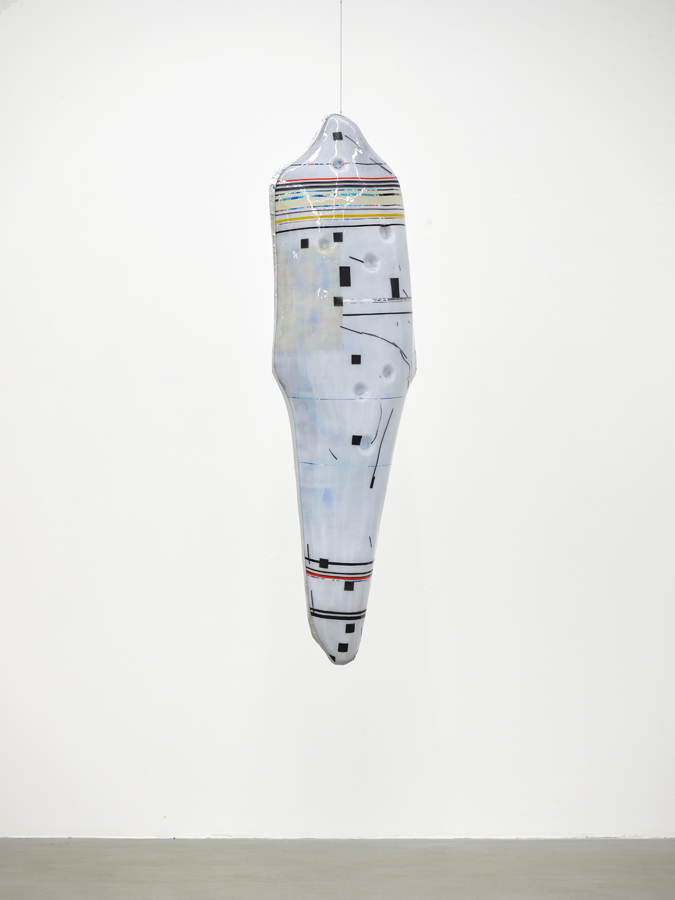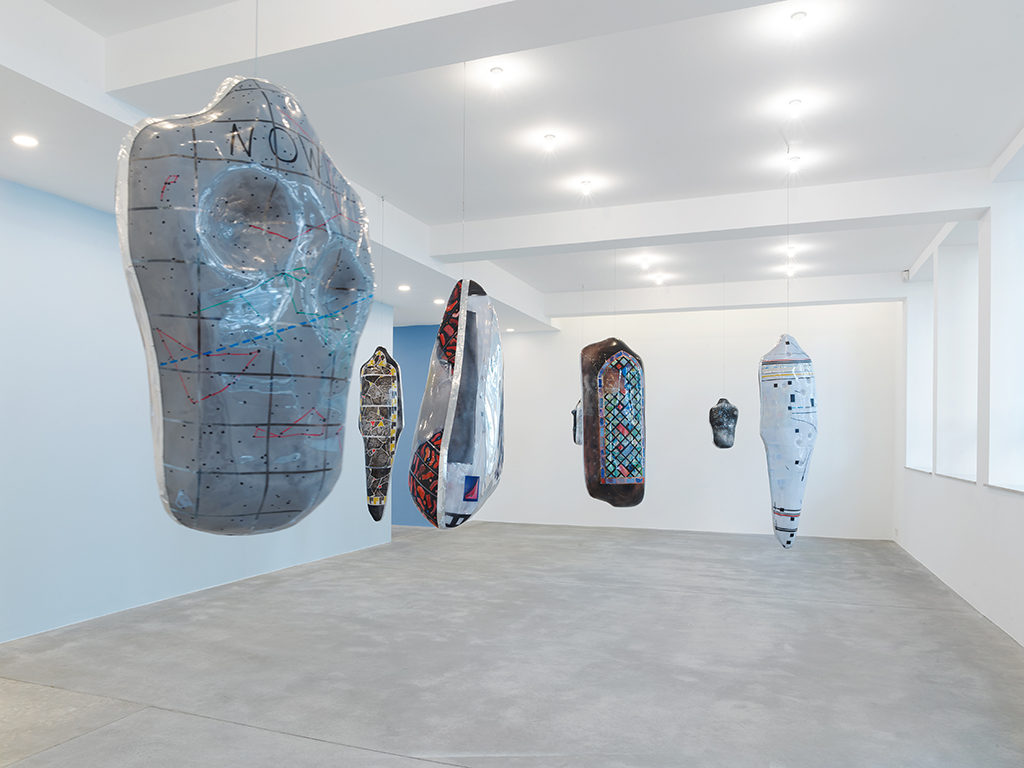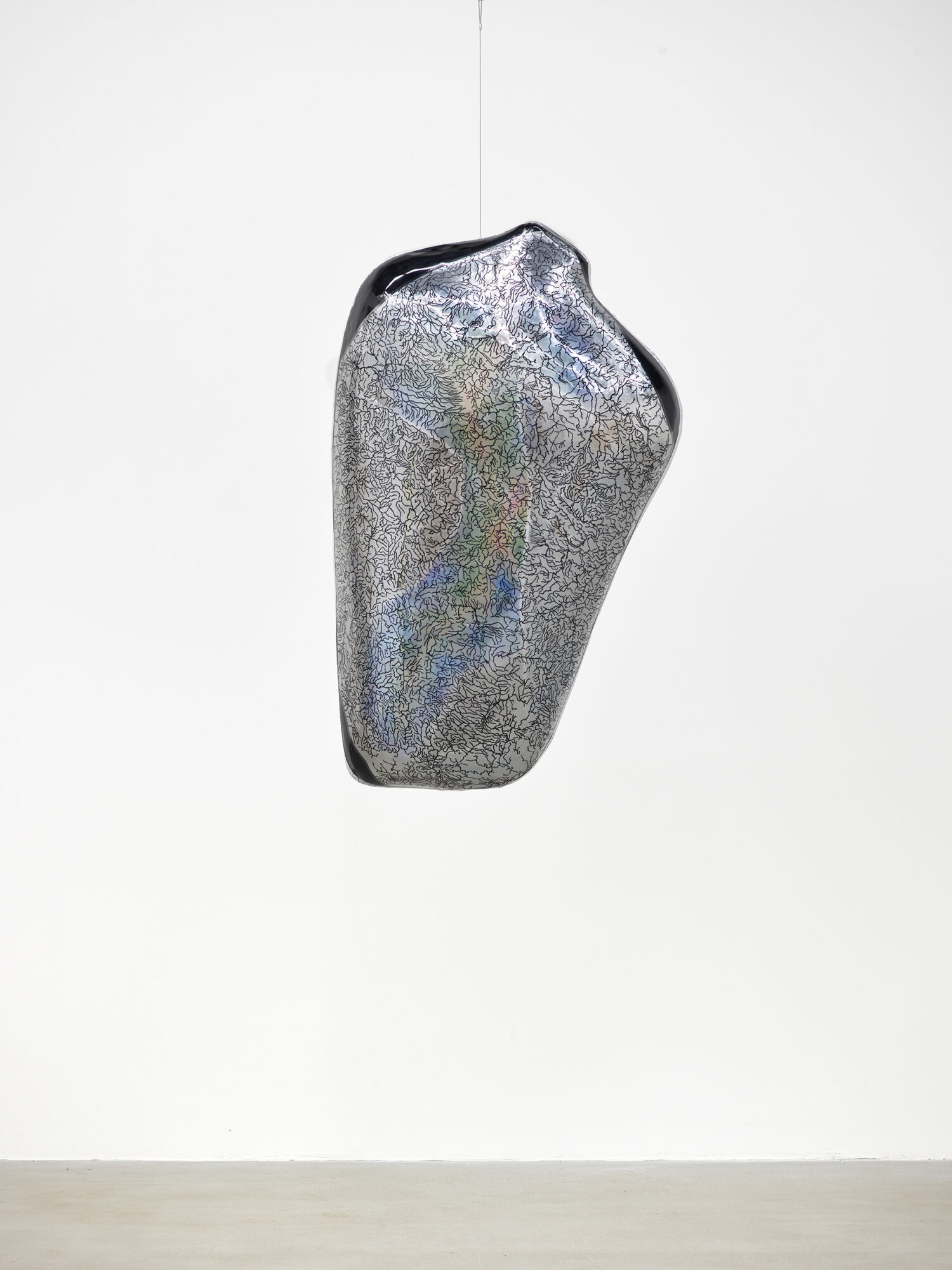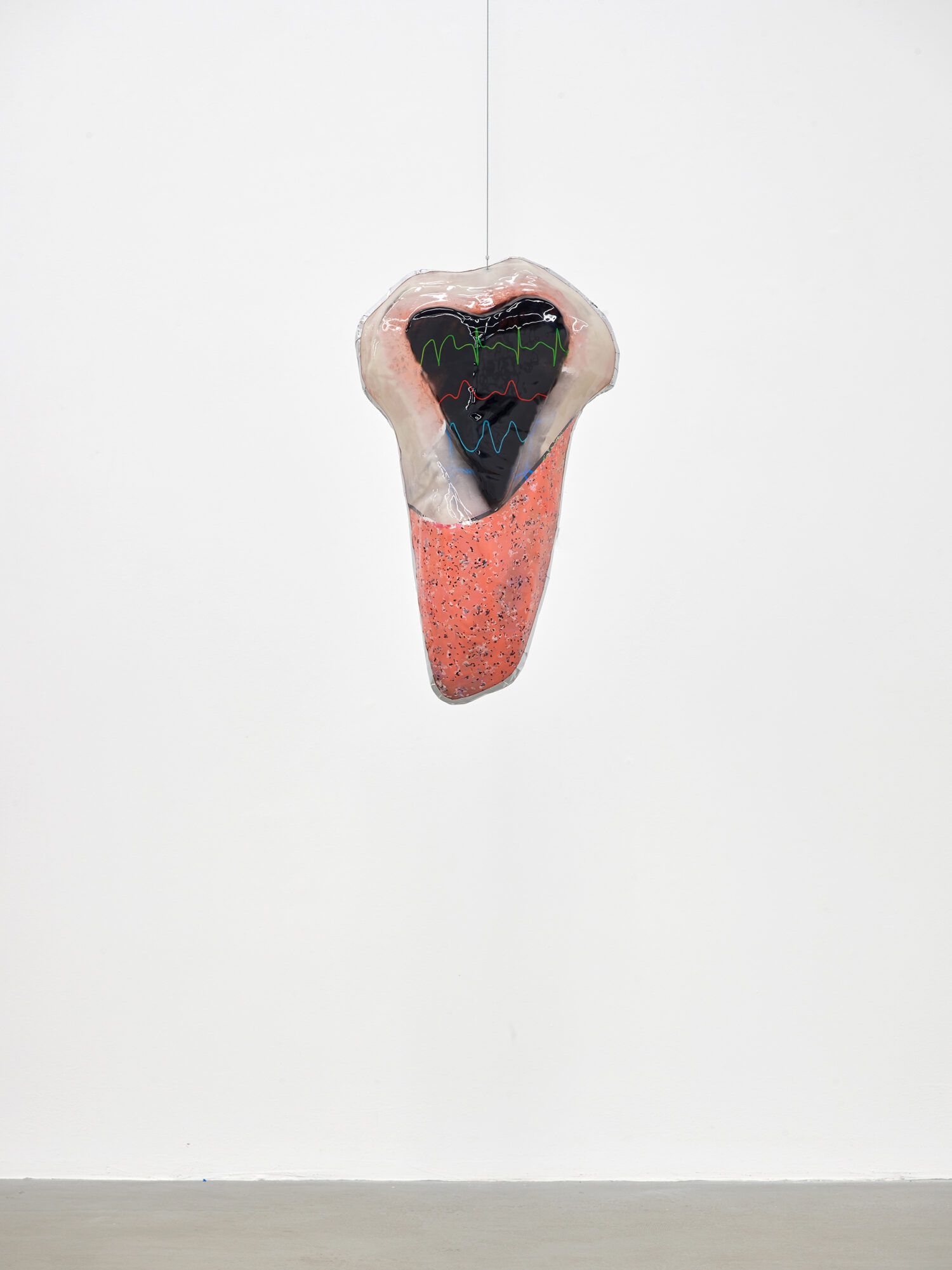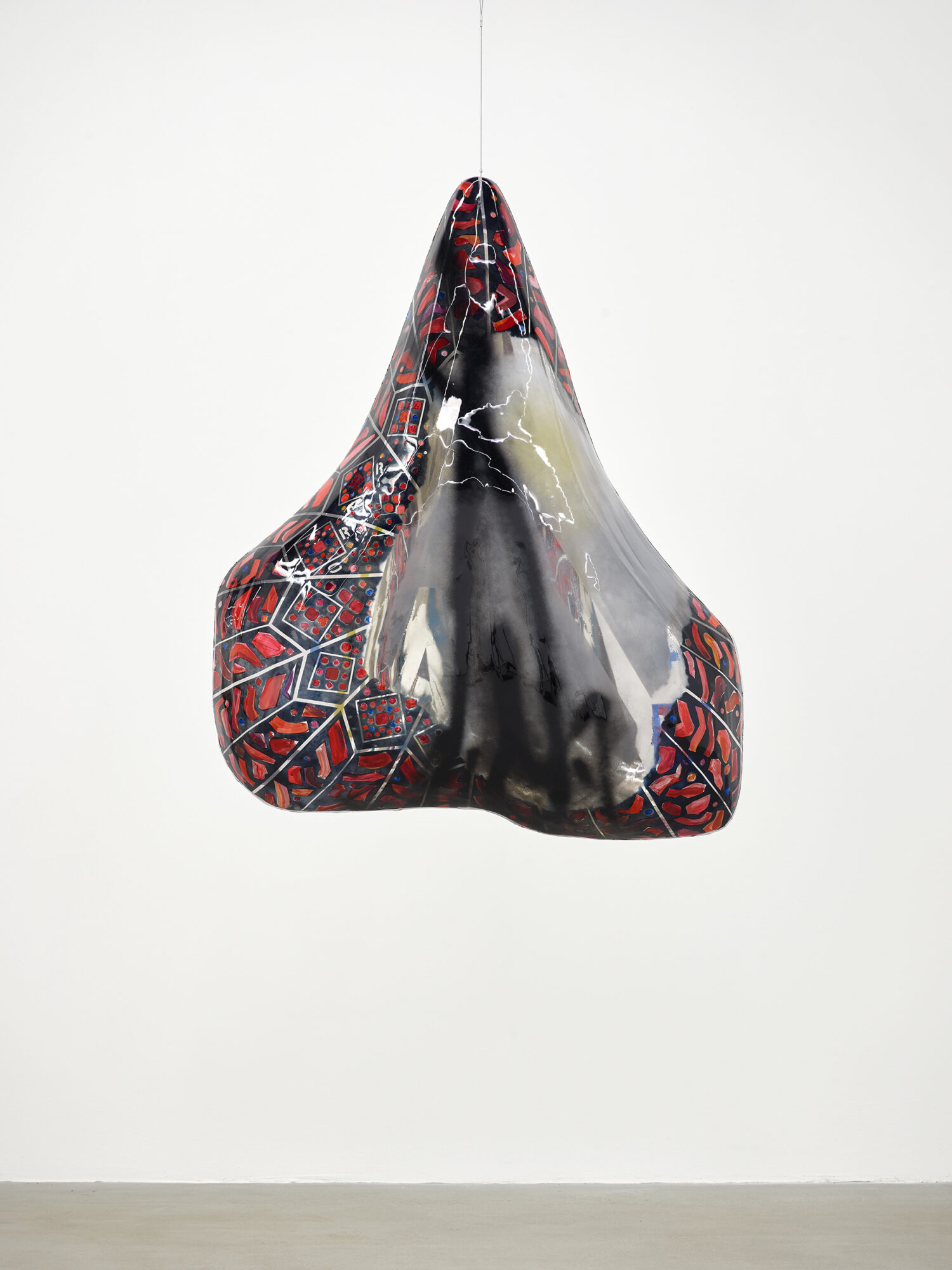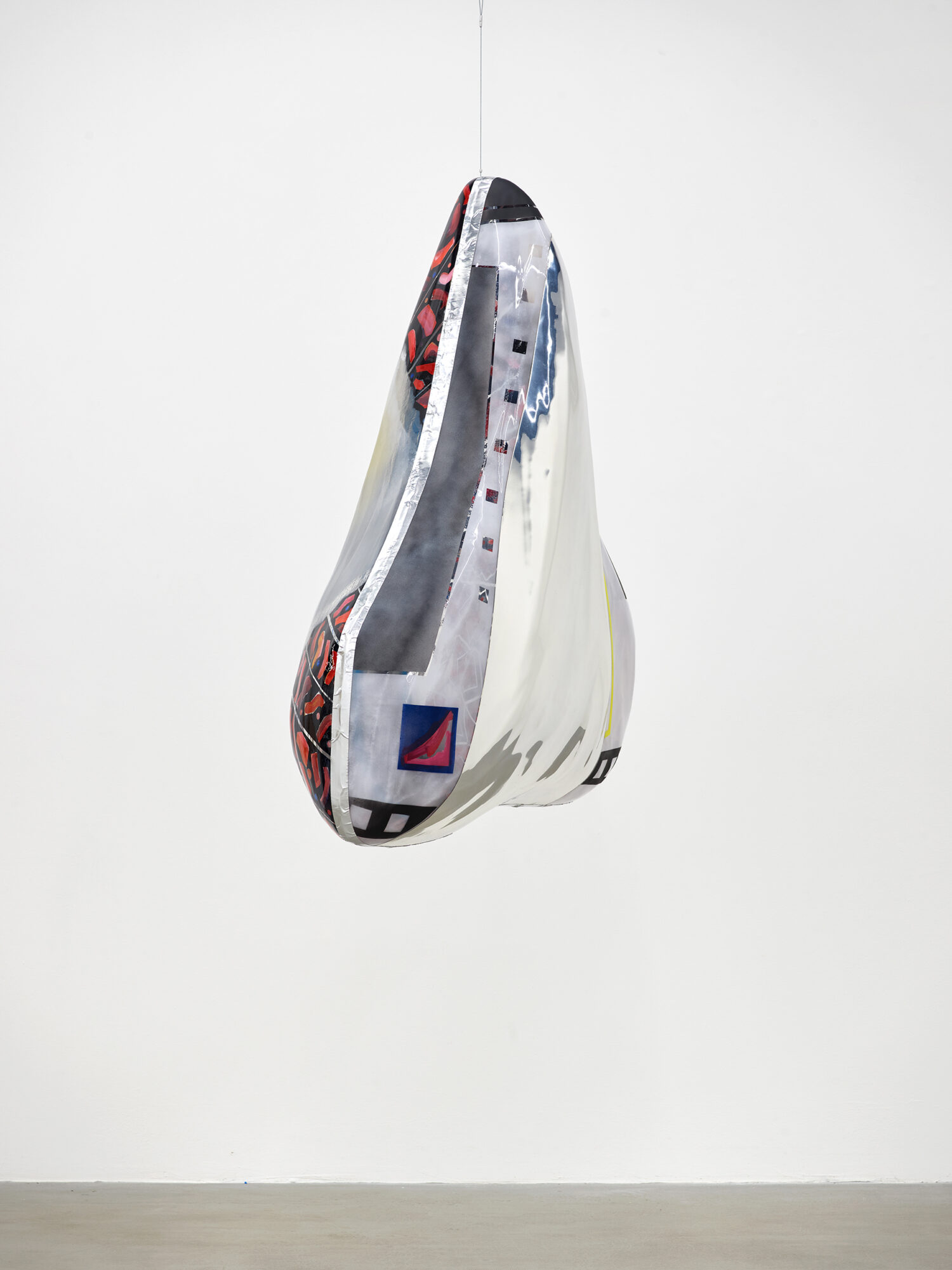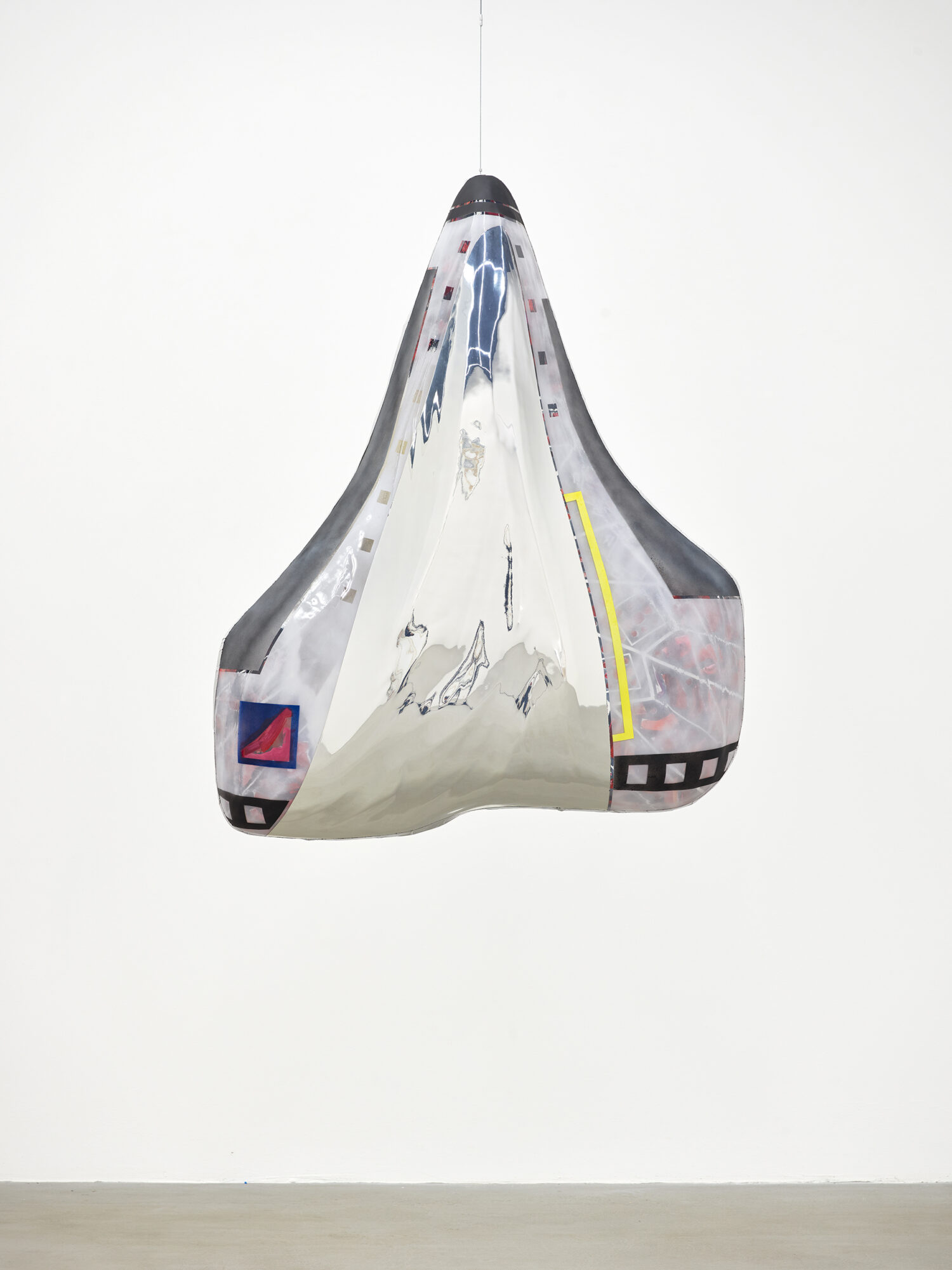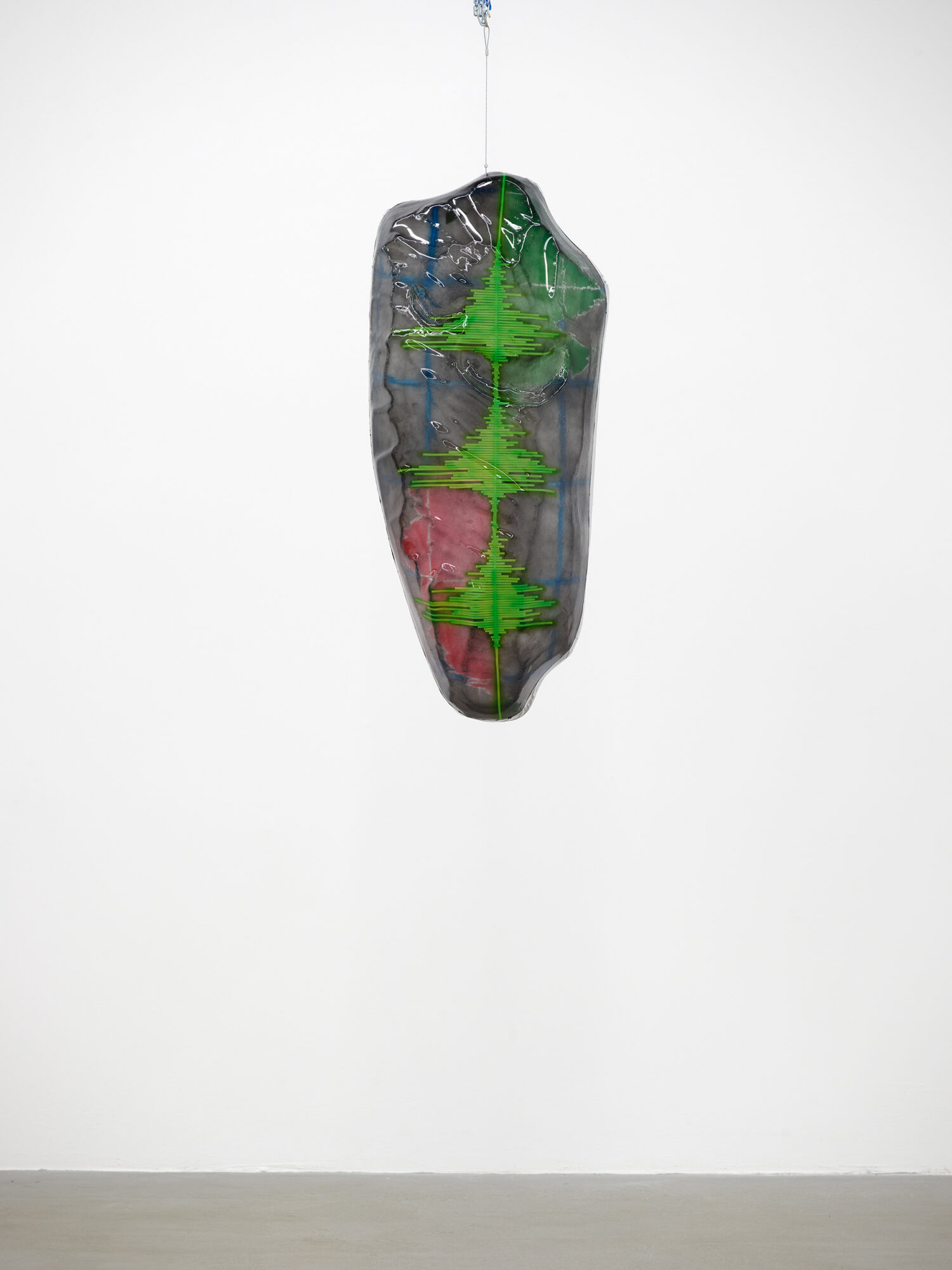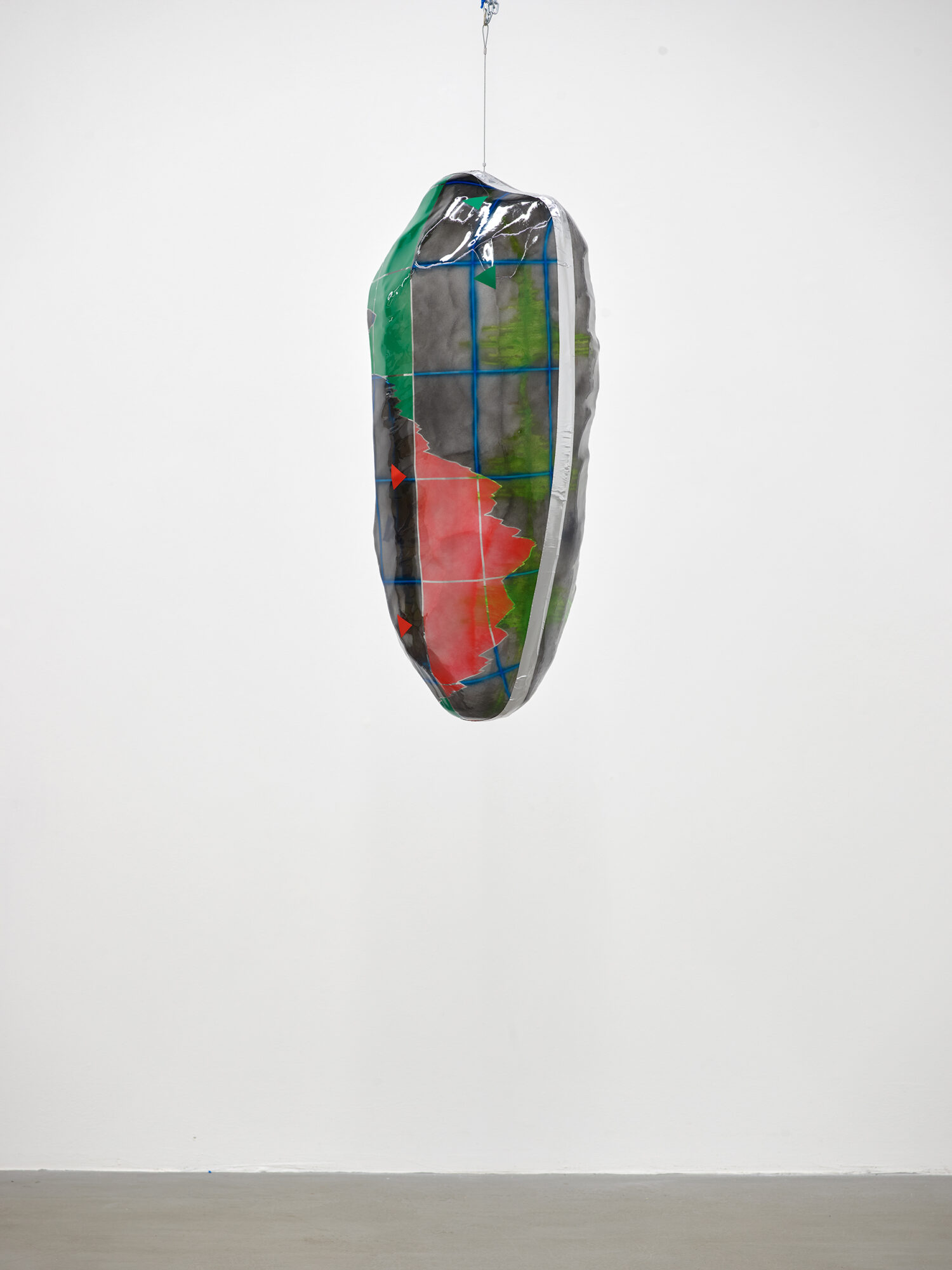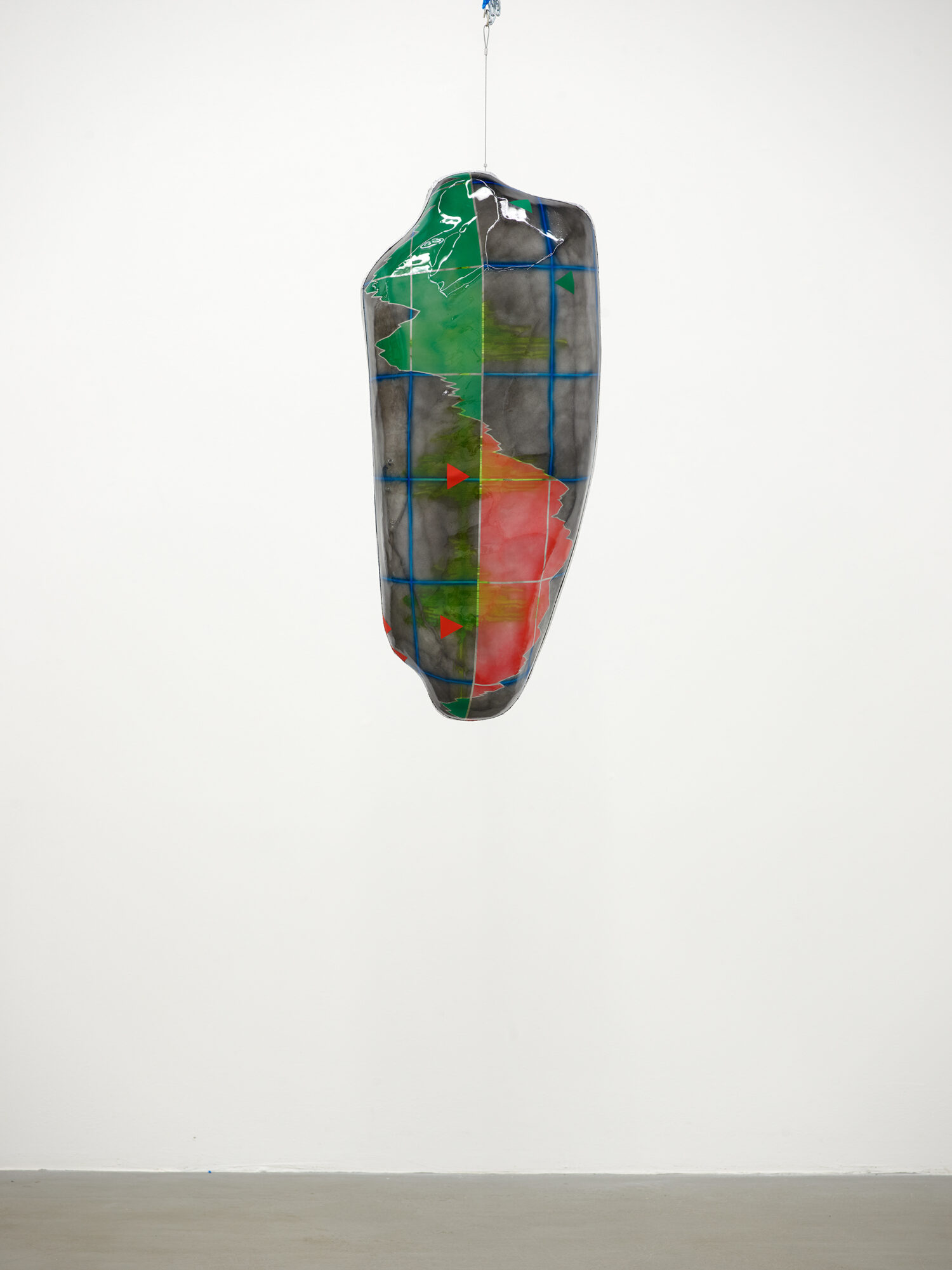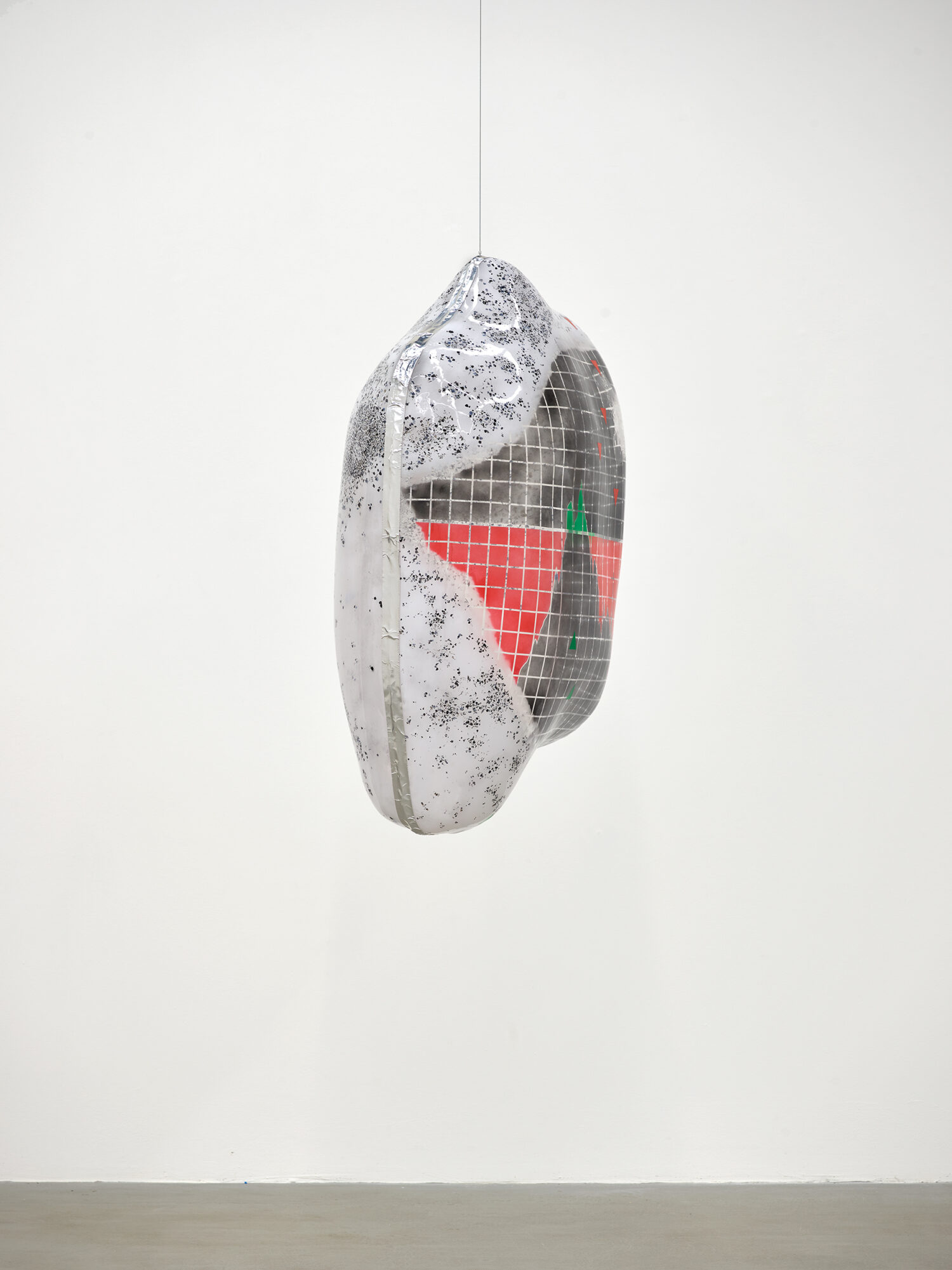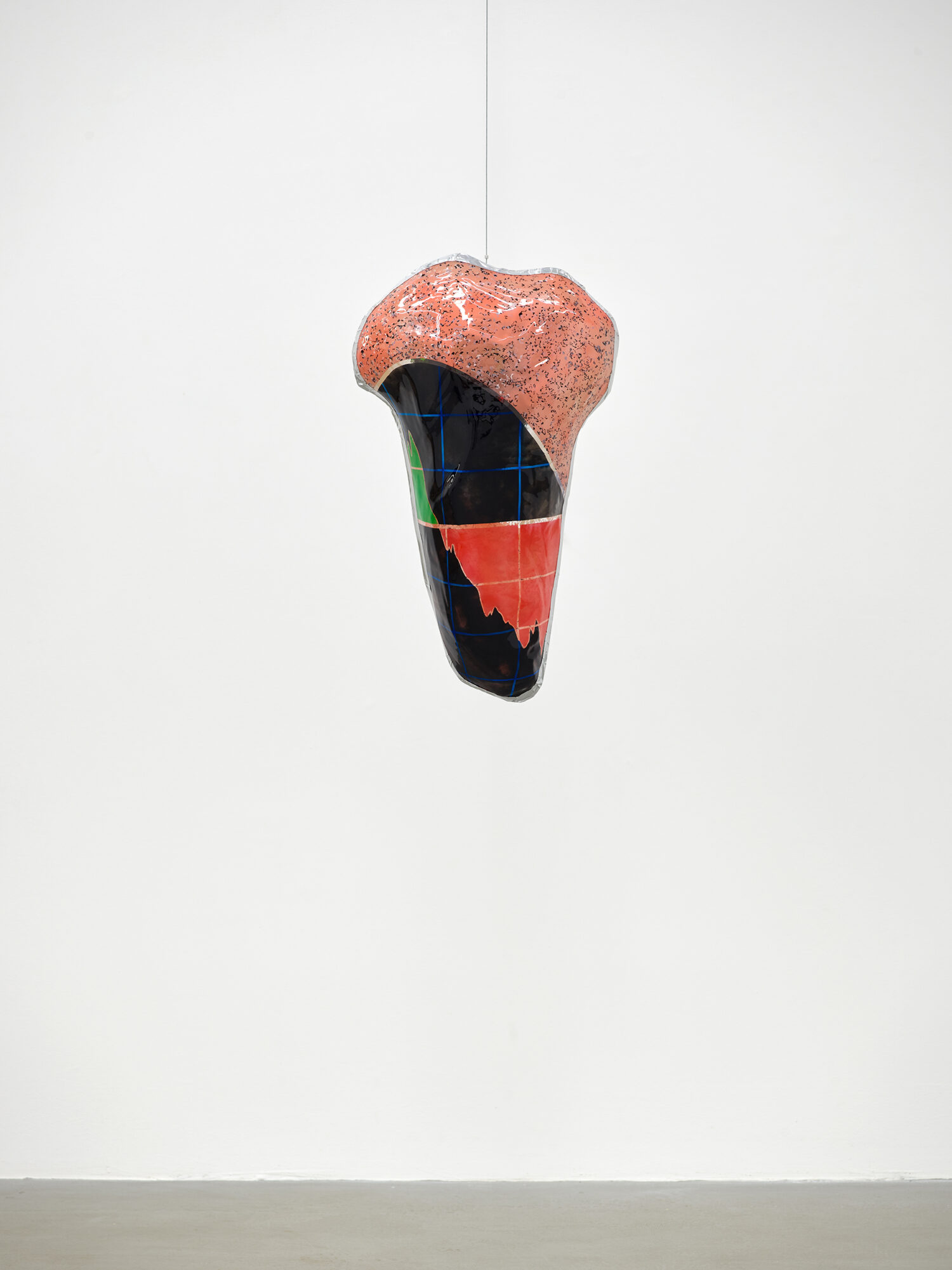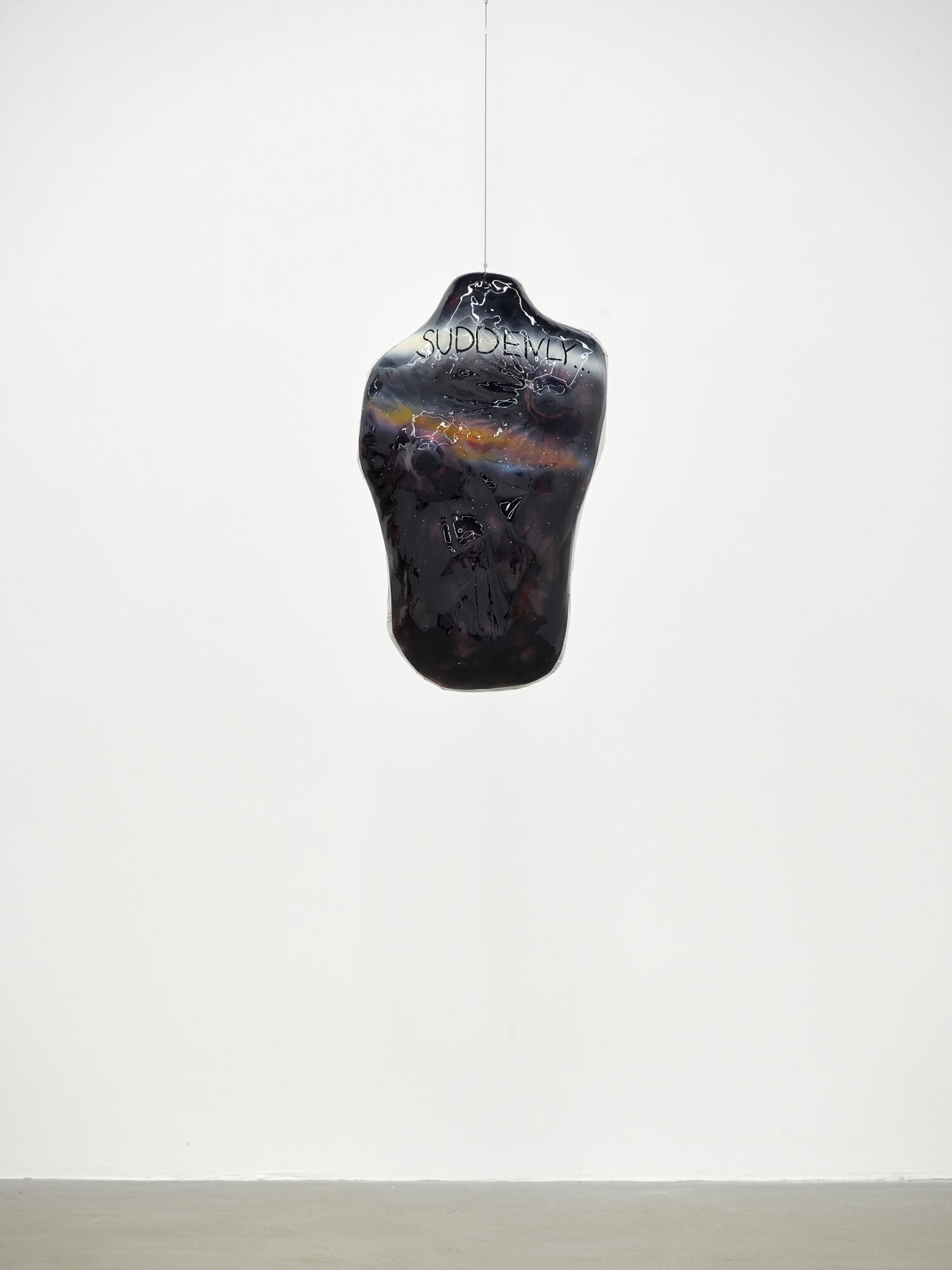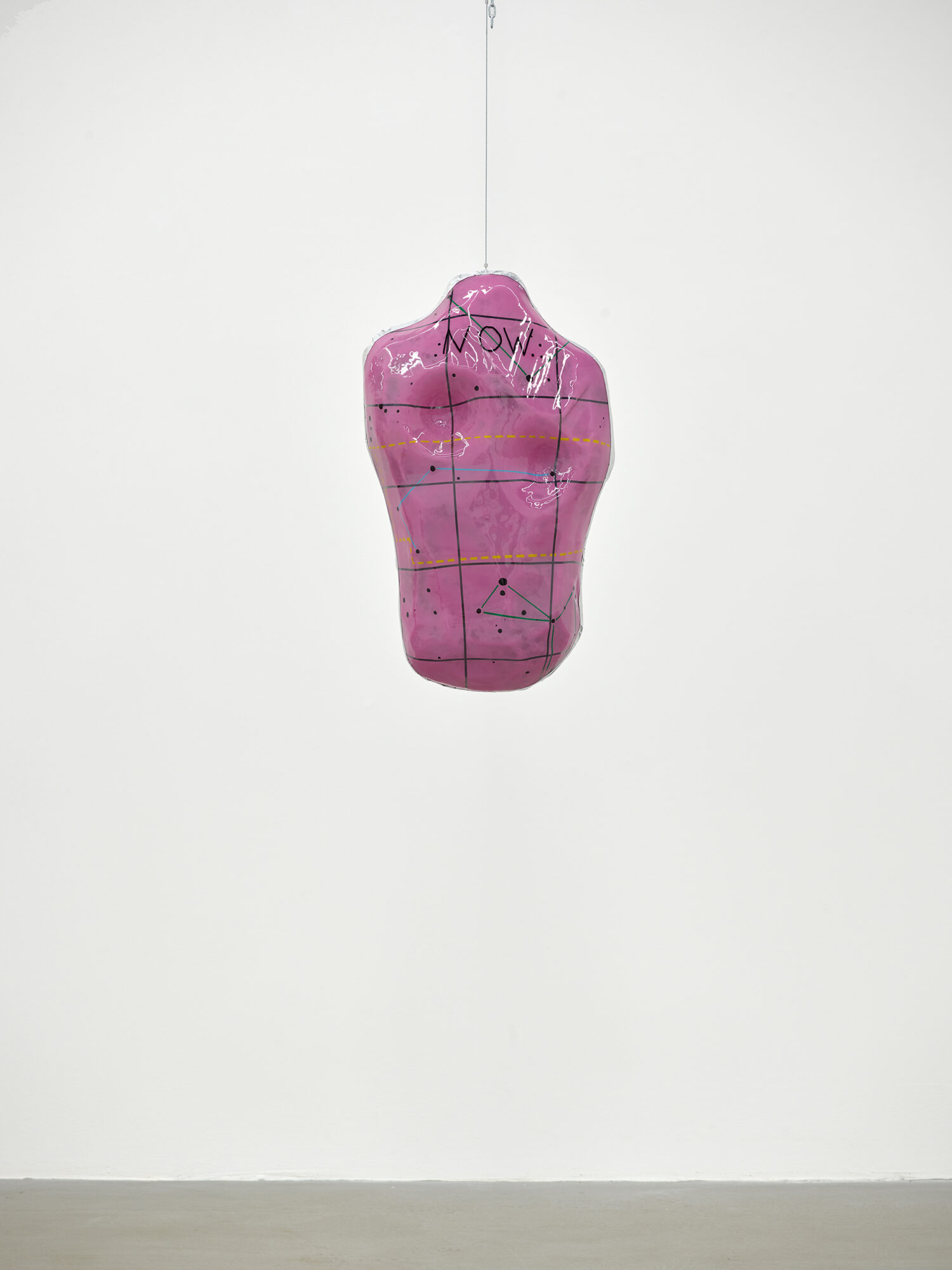

There are two actions that drive the works: (1) the action of carving something away until it is completely hollowed, and (2) the action of making structure out of translucency.
These are two distinct actions – to make sculpture arise from hollowness and, separately, to derive sculpture from translucency.
Keeping in mind these two features – hollowness and translucency – provides a succinct way to think about each work, especially in the solid and opaque context of sculpture’s history.
***
Additional notes:
• Contour. The decision to make sculpture without a center – without bulk, without solid mass, without allowing a dense lump – is the decision to make sculpture that operates solely through its own contour. In turn, this allows us to acknowledge the interiority of each work, and the potentially missed interiority of sculpture-in-general.
• Translucency. The decision to originate a sculptural footprint from translucency is the decision to make form without immediately involving vision. A delayed attention to the eye – attention that comes only after the force of building something in real space with firm tangibility and contournability – puts a slight primacy on living over looking.
• Singular hands. The works are all made by my hands and made alone. This is not a manifesto against aid or collaboration or technology. But the information could be used as a foothold into the works to the extent that we can believe in something energetic, fresh, alive, important, and perceptible in being nearby anything that is created by a singular set of human hands – without mechanization, without a group, and without being externalized to others until the work itself exists on its own terms.
• Enclosure. When contour (or edge, line, rind) is brought back to itself in a full circular enclosure, then that contour becomes strong like a stone even as it remains thin, empty, and compositionally open…. Once a work is completed, I am able to fully sit or lay across it with full weight.This is satisfying because it underscores that openness is not the opposite of strength.
• Qualities of time and space. The sculptures in this exhibition are all considerations of qualities of time and space – of different ways these are lived by us. This exposes two beliefs: (1) that sculpture is a medium capable of contributing some knowledge on how human time is experienced, as well as spatial knowledge, and (2) that not all time or space is the same, as if pure abstractions. We have slow hours and also hours that zip by; we create spaces that have great impact on us, and also spatialities that leave no engagement between us. The sculptures in the exhibition are each then predicated on this understanding that both time and space have character. By extension, the exhibition, “Horizon Figures”, is also predicated on the understanding that we are each figures that also contain horizons.
– Ragen Moss
